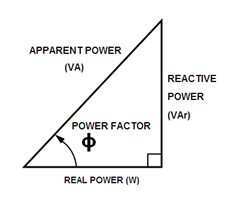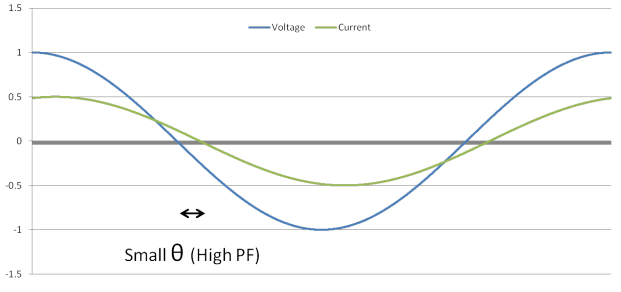The power supplied to the stator is best known as active or real power for it produces the torque of the motor. Together, the real and reactive power form the total or apparent power in the system.
This is often depicted on a power triangle.


Active Power / Apparent Power
Solve for φ (The displacement angle between voltage and current)
In an induction motor the amount of reactive power that is required to generate the rotor’s magnetic field is constant regardless of the load. However, the amount of real power required for an induction motor varies with the load. Therefore, the ratio of real power to apparent power decreases when an induction motor is lightly loaded. This displacement pulls the current out of phase with the voltage, creating a larger φ angle and a resulting lower displacement power factor.


However this is not the case in environments where measurable harmonics are present as the true power factor of the system takes both the displacement power factor and the total harmonic distortion (THD) into account. A typical full-wave diode bridge rectifier within a VFD has approximately 45% current harmonic distortion. Using the formula in Figure 4 below, an expected 0.99 power factor with 0.45 THD would result in a 0.90 power factor.
Harmonic currents are reactive as they do not produce useful work and therefore remove some of the power factor benefits that the VFD provides. In order to determine the true power factor of the induction motor it must include the total harmonic distortion (THD) in its evaluation.

